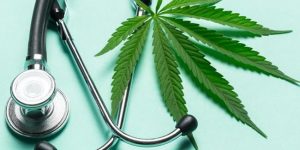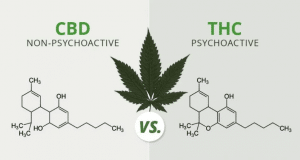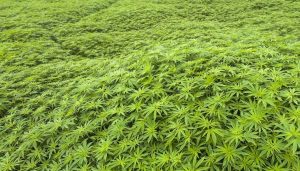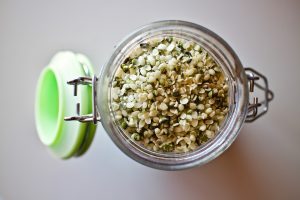
Cannabis sativa L. is a robust plant adapted to almost any environment. It is known for its many virtues. Very often assimilated as a drug, it is however used for a long time for industrial purposes. Despite disagreements about the classification of the different species and/or subspecies of hemp (indica, ruderalis and afghanica), one thing is certain: it is the impressive number of lines obtained by hybridization of cannabis. To date, there are about a hundred varieties of hemp. They are distinguished physically (size, density, holding, leaves, flowers, seeds, …) and chemically (cannabinoids, terpenes and flavonoids mainly). All these crossings are made with a precise goal: to give the optimal characteristics to a line of hemp according to a well defined use.
Today, cannabis culture is spreading more and more around the world. Thus, it meets a large demand for recreational, industrial and medical purposes.
The cannabis plant
The name hemp is derived from the Latin cannabis. It is a plant of the Cannabaceae family. It is one of the first to be “domesticated” by man. Despite its ancestral origins in Central and South Asia, it quickly found itself on all the continents of the globe through successive migrations. Its robustness and its great faculties of adaptations to the various climates and existing pests made it possible to establish itself easily almost everywhere. It is thus specifically distinguished on phenotypic and genotypic criteria.
From a strictly botanical point of view Cannabis sativa L. is the only recognized species of hemp. All the other denominations would be varieties resulting from this Asian pioneer by genetic transformation with the wire of time. These modifications come from environmental changes and/or the multiple crossbreeding they undergo.
The cannabis is of dioecious type. This means that there are male and female plants. These 2 sexes are necessary to each other for fertilization and therefore, the possibility of a progeny via a viable seed. It is an annual plant. Its life cycle, from germination to the production of seeds, takes one year.
The different varieties of cannabis have allowed the multiplication of its involvement in the life of man:
- Fiber richness of a variety: agricultural use
- The concentration of cannabinoids naturally present in a variety (mainly CBD or cannabidiol and THC or tetrahydrocannabinol): recreational use
Cannabis varieties
Generally, the respective CBD and THC contents of hemp will determine a preferential type of use:
- High THC concentration and low CBD concentration: recreational use
- High CBD concentration and low THC concentration: agricultural use
In reality, the properties of cannabis are not reduced to the dosage of cannabinoids. Indeed, several factors influence the use of this plant:
- type of seeds (feminized, regular, automatic seeds),
- growth,
- robustness,
- size,
- outfit,
- flowering,
- content and type of active substances,
- organoleptic properties,
- rich in fiber…
There are naturally 4 types of hemp phenotypes. They are characterized, by some botanists, as 4 very different species. For others, they as derived from the single species of hemp, Cannabis sativa L :
- Cannabis sativa L.: Also called “cultivated hemp” or “sativa”.
This type of marijuana is mainly located in equatorial regions. Its growth is fast and important. In optimal conditions, a cannabis plant of this species can reach 6 meters in height. On the other hand, it has little branching and a rather long life cycle. Very rich in fibers, it is mainly used in the manufacture of textiles, building materials and cosmetics. But, with a respectable concentration in THC, it also allows a recreational use (drug).
- Cannabis indica Lam: Also
called “Indian hemp” because of its Himalayan origin (North of India) or “indica . This type of cannabis has an average stature which does not exceed 3 meters. On the other hand, it is very branched what confers him a bushy aspect. Its life cycle is much shorter than the previous phenotype. The concentration of its active principles is dependent on its place of culture (climate and environment). But, in spite of everything, it is distinguished from the other varieties of cannabis by its heavy and powerful psychotropic effects (“stone”). These give it an essentially recreational use with high risks of dependence.
- Cannabis rudéralis Janish: Also called “wild hemp”.
It has long been considered a wild weed (as its common name indicates) growing on the roadside or at the bend in a path in Central and Eastern Europe. This type of cannabis supports cold and hostile climates. It is small in size (less than 1 meter) and has few branches. Its concentration is very low in THC (< 0,5%) and it has a very early bloom. this character makes it very interesting to cultivate. It is true that many varieties of hybrids are resulting from crosses between ruderalis and other subspecies of cannabis. Thus, the new line will have this characteristic very coveted by the hemp growers.
- Cannabis Afghanica: Also called “Afghan hemp”.
This type of cannabis is cultivated mainly to make hashish (shit, resin, …). Originating in Kafiristan (a remote province in the mountains between Pakistan and Afghanistan), it has many branches. As a result, its appearance is rather bushy. It has a high THC content. On the other hand, its small size (< 1,5 meters) and, thus, its poverty in fibers, makes it useless for an agricultural use.
The classification of these 4 hemp phenotypes is still under debate. For as much, all the varieties of cannabis which one finds today (Hindu Kush, Amnésia, Banana Kush, Skunk, Lemon Haze, Candy Kush, . To quote only them) are only hybrids resulting from successive crossings between these 4 lines with the very particular characteristics.
Cannabis through history
The evidence of the first uses of hemp would date from 8000 years BC (drawing of a cannabis leaf on ceramics in China found during archaeological excavations). It is quickly found on all the continents, as well for the robustness of its fibers as for its psychotropic virtues (drugs):
Agricultural use
Clothes were woven from this plant from 600 BC in China and from the Middle Ages in Europe. Until the 20th century, paper was mainly made from hemp. For a long time, banknotes, sails and ropes for ships were made from the very resistant fibers of this plant. Even today, hemp is used in the textile industry. Moreover, it is used more and more in the building industry as a thermal and sound insulator.
Psychotropic use
As early as 2500 BC, some Chinese rituals used cannabis for its “magical effects”. In parallel with modern medicine, this kind of rituals (whatever the time) has always lasted. It is still today in different forms (healer, shaman, witch, trance, hypnosis, …). But, always with the aim of: healing, curing, relieving.
Since the 90’s, the consumption of this so particular plant is not so stereotyped anymore. Indeed, its consumption was considered marginal and reserved for “thugs” and young people. For example, the consumption of Indian hemp arrived in Europe with the hippie movement of the 70s. It symbolized the protest of the bourgeois society. On the contrary, today, it is found in all types of environments and for different uses.
The consumption of cannabis as a drug and the use of its fibers allow it to cross history to the point of spreading in almost all the countries of the world. But, its food qualities (oil seeds) and its medical properties are not in rest.
Therapeutic cannabis
As we saw in the previous chapter, the history of cannabis is full of rituals and other hypnotic ceremonies. These practices used the properties of this plant to relieve a patient. However, the “modern” medicine of the time, even if it did not use these practices, also used cannabis as a treatment. Several manuscripts describe the effects of cannabic treatments on the health of patients:
- anti-pain, anti-nausea, anti-inflammatory.
Similar properties are observed today in patients treated with cannabis in countries open to therapeutic hemp.
Cannabis has been used for a long time for its benefits on certain pathologies. If the pharmacopoeias have gradually abandoned this plant (1953 in France), it is for its harmful effects on health and addictive. Indeed, in addition to having analgesic properties, cannabis has a more or less powerful psychotropic action. This characteristic can generate, in the short and long term, serious psychological and physical disorders (anxiety, paranoia, hallucination, social isolation, respiratory deficiency, cardiovascular disorders,…). The balance between benefit and risk then arises. Consequently, the consumption of cannabis, whatever its form, becomes illegal on the French territory among others.
It is in 1964, that the Israeli chemist,
Raphaël Mechoulam
He isolated the active substance tetrahydrocannabinol (THC) from the rest of the plant. 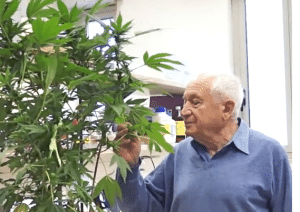
Therapeutic cannabis in France
In France, in 2019, an amendment proposes to test therapeutic cannabis treatments. It is voted unanimously. This test will be spread over 2 years and will concern 3000 patients followed in hospitals. Thus, the balance of benefits / risks of such a treatment can be studied concretely. Although this evaluation was to begin in the last quarter of 2020, it has been postponed to January 2021 due to the
Covid-19
.
The active substances of cannabis plants
There are essentially 3 types of active ingredients present in cannabis:
Cannabinoids
These are chemicals naturally present in Cannabis sativa L. plants. They directly or indirectly activate the CB1 and CB2 cannabinoid receptors of the mammalian endoncannabinoid system (ECS). If there are a hundred of them in all, each variety of cannabis will have more or less variable proportions of these active compounds. Even within a variety, the concentrations can vary according to climatic and environmental factors. Among these various cannabinoids, 3 of them are the most widespread and the most remarkable by their effects. THC (tetrahydrocannabinol), CBD (cannabidiol) and CBN (cannabinol).
Flavonoids
Like most of the plant world, cannabis produces flavonoids. In marijuana plants some of these molecules are common to those of fruits and vegetables. But there are 23 specific to this plant: the “cannaflavins”. Non psychoactive and likely to have interesting anti-oxidant, antibacterial and anti-viral properties, flavonoids are good allies to optimize the effects of cannabinoids (entourage effect).
Terpenes
These are the main components of a resin or essential oil plant. As for cannabis as a plant, it is the terpenes that give it its organoleptic properties (taste and smell). Qualities that are very useful for pollination, and much appreciated by consumers! In addition to their aromatic properties, terpenes can enter in synergy with the other molecules of the plant as catalysts or inhibitors.
The CBD, CBN and THC of cannabis
The
cannabinol
(CBN) results from the oxidation of tetrahydrocannabinol exposed to light. Its medical interest is mainly due to its sedative action.
THC is the active substance responsible for the prohibition of cannabis use because of its psychoactive effect leading to psychic dependence.
CBD does not produce psychotropic side effects. It appears to be totally legal as a simple molecule. Its benefits and its controlled legality arouse many commercial (shops) and therapeutic (consumers) interests. As a result, a multitude of CBD products (oil, oil seeds, flowers, cosmetics, dietary supplements) is quickly emerging. Since then, their success has only increased. Currently, it is exploding!
The cultivation of cannabis
There are two main ways to grow cannabis: indoor and outdoor.
Indoor cultivation
This culture allows to control all the exogenous factors of the hemp plant:
- hygrometry, temperature, fertilization, lighting, …
This practice is preferred by laboratories (therapeutic cannabis) and official dealers (CBD and recreational hemp in countries where the law allows it).
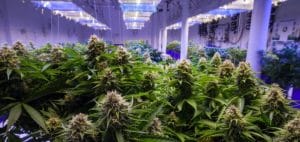
Outdoor cultivation
Under optimal outdoor growing conditions, a hemp plant has better yields than indoors for the same variety. Indeed, under these conditions, the nutrient supply is unlimited in space. The plant can then develop in an optimal way. But, this type of cultivation depends on environmental and climatic factors. These can seriously impact a crop in poor conditions. The return is therefore more random!
This agriculture in fields is thus essentially found for the agricultural hemp. This use bets more on the quantity of the product (size, weight, aspect) than on its quality (concentration in cannabinoids, terpenes and flavonoids). However, in large countries producing and exporting illegal cannabis (drugs: kif, resin or flowers), like Morocco, it is not uncommon to come across a marijuana field lost in the middle of the mountains. This type of cultivation is much less expensive and more anonymous.
The Cannabis seed
Apart from cloning an existing hemp plant, cannabis cultivation starts from a seed. Today, in seed banks, three main types can be distinguished:
- Regular seeds: “Natural” shape of a seed. It gives birth to a male or female cannabis plant.
- Feminized seeds: Seed guaranteeing to its cultivator the obtaining of a female foot. These seeds are the most used for recreational (narcotic) or therapeutic cannabis. It guarantees the formation of the inflorescences where the maximum content of active principles is located.
- The seeds with auto flowering (automatic seeds): The marijuana resulting from a seed “
automatic
“is independent of the photoperiod. Therefore, the duration of its culture (growth and flowering) is programmed in advance. Its returns are less abundant than those of the same variety cannabis resulting from a feminized seed. However, its small size and short life cycle give it significant advantages. Especially for novice or hurried growers.
Cannabis seeds are free of THC. It is then perfectly legal to own them. However, it is forbidden to germinate them. Seeds of multiple varieties of hemp are thus openly displayed in the windows of specific shops. They are sold as collection seeds.
The various products resulting from the culture of cannabis
There are many products made from cannabis. Some are legal because they come from a hemp plant with THC concentrations below 0.2% (threshold tolerated by French law). Others belong to the class of narcotics. We distinguish globally, 3 types of hemp :
- Agricultural hemp: textile fibers, construction materials (bricks, thermal and phonic insulation), bedding, seeds for animal feed, biofuel, hemp seeds.
- Recreational (drugs) and medicalhemp (in countries where the law allows it) :
flowers
(grass, weed, buds, heads, …), leaves, full spectrum oil (fullspectrum), cannabis resin (hashish, shit, shish, afghan, pollen, …), oil capsules, Marrakech butter, medicines. - A French “therapeutic” hemp (CBD products):
CBD oils
(CBD isolates, broadspectrum or fullspectrum oil), seed oil (oil seeds), CBD resin, cosmetics (balms, ointment), dietary supplements (capsules, roasted seeds…), electronic cigarette liquids,
dried flowers and leaves
(infusion, vaporization).
To conclude on cannabis…
The Cannabis sativa L. and its derivatives arouse many interests to the man according to their various characteristics:
- The richness of their fibers (industrial cannabis),
- their virtues and the concentration of their active products (drugs or medical),
- their ease of adaptation to environmental changes
- their organoleptic qualities.
If the use of hemp goes back to the dawn of time, its consumption has not stopped increasing and diversifying. Currently, it is experiencing a real explosion. On the one hand, because more and more territories are opening up to medical cannabis. On the other hand, for the revealed benefits of CBD hemp which, a priori, does not present any risk for health (non-psychotropic). In France, smoking a joint of grass remains an act reprehensible by the law and dangerous for the health. However, today, the systematic stigmatization of cannabis is a thing of the past.
FAQ: cannabis
[sp_easyaccordion id=”10802″]
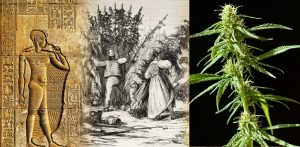
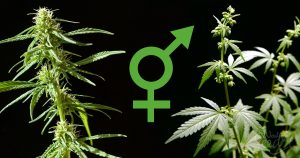
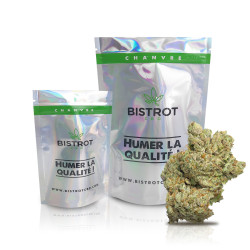
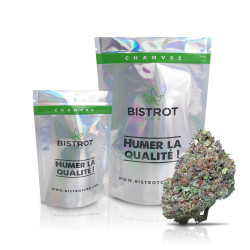
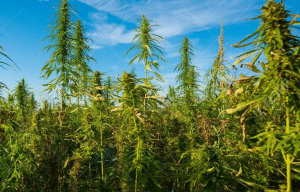 This type of marijuana is mainly located in equatorial regions. Its growth is fast and important. In optimal conditions, a cannabis plant of this species can reach 6 meters in height. On the other hand, it has little branching and a rather long life cycle. Very rich in fibers, it is mainly used in the manufacture of textiles, building materials and cosmetics. But, with a respectable concentration in THC, it also allows a recreational use (drug).
This type of marijuana is mainly located in equatorial regions. Its growth is fast and important. In optimal conditions, a cannabis plant of this species can reach 6 meters in height. On the other hand, it has little branching and a rather long life cycle. Very rich in fibers, it is mainly used in the manufacture of textiles, building materials and cosmetics. But, with a respectable concentration in THC, it also allows a recreational use (drug). 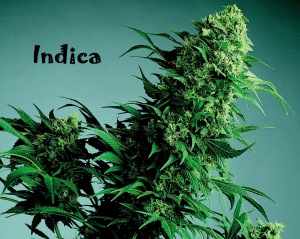 called “Indian hemp” because of its Himalayan origin (North of India) or “indica . This type of cannabis has an average stature which does not exceed 3 meters. On the other hand, it is very branched what confers him a bushy aspect. Its life cycle is much shorter than the previous phenotype. The concentration of its active principles is dependent on its place of culture (climate and environment). But, in spite of everything, it is distinguished from the other varieties of cannabis by its heavy and powerful psychotropic effects (“stone”). These give it an essentially recreational use with high risks of dependence.
called “Indian hemp” because of its Himalayan origin (North of India) or “indica . This type of cannabis has an average stature which does not exceed 3 meters. On the other hand, it is very branched what confers him a bushy aspect. Its life cycle is much shorter than the previous phenotype. The concentration of its active principles is dependent on its place of culture (climate and environment). But, in spite of everything, it is distinguished from the other varieties of cannabis by its heavy and powerful psychotropic effects (“stone”). These give it an essentially recreational use with high risks of dependence. 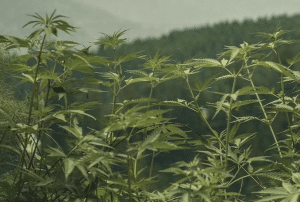 It has long been considered a wild weed (as its common name indicates) growing on the roadside or at the bend in a path in Central and Eastern Europe. This type of cannabis supports cold and hostile climates. It is small in size (less than 1 meter) and has few branches. Its concentration is very low in THC (< 0,5%) and it has a very early bloom. this character makes it very interesting to cultivate. It is true that many varieties of hybrids are resulting from crosses between ruderalis and other subspecies of cannabis. Thus, the new line will have this characteristic very coveted by the hemp growers.
It has long been considered a wild weed (as its common name indicates) growing on the roadside or at the bend in a path in Central and Eastern Europe. This type of cannabis supports cold and hostile climates. It is small in size (less than 1 meter) and has few branches. Its concentration is very low in THC (< 0,5%) and it has a very early bloom. this character makes it very interesting to cultivate. It is true that many varieties of hybrids are resulting from crosses between ruderalis and other subspecies of cannabis. Thus, the new line will have this characteristic very coveted by the hemp growers. 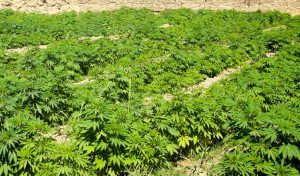 This type of cannabis is cultivated mainly to make hashish (shit, resin, …). Originating in Kafiristan (a remote province in the mountains between Pakistan and Afghanistan), it has many branches. As a result, its appearance is rather bushy. It has a high THC content. On the other hand, its small size (< 1,5 meters) and, thus, its poverty in fibers, makes it useless for an agricultural use.
This type of cannabis is cultivated mainly to make hashish (shit, resin, …). Originating in Kafiristan (a remote province in the mountains between Pakistan and Afghanistan), it has many branches. As a result, its appearance is rather bushy. It has a high THC content. On the other hand, its small size (< 1,5 meters) and, thus, its poverty in fibers, makes it useless for an agricultural use. 

